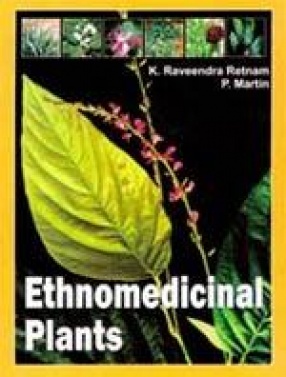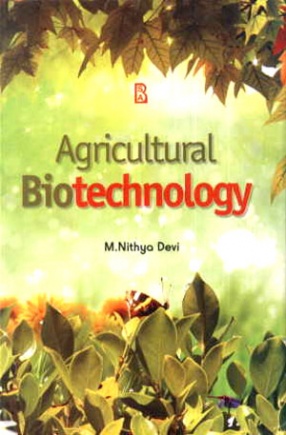The history of herbal medicines is as old as human civilization. For the sustenance and survival, man has to depend on nature. To keep himself healthy he has to use medicinal plants. Nature, by its very design, provides a remedy for nearly any disease that may afflict a human being. In the past, almost all the medicines were from the plants, the plant being man’s only chemist for ages. Since the beginning of humankind people have relied primarily on plants for nourishment. Through trial and error they discovered that some plants are good for food, that some are poisonous, and that some produce bodily changes such as increased perspiration, bowel movement, urination, relief of pain, hallucination, and healing. Over the millennia these from generation to generation, with each generation adding to and refining the body of knowledge. every culture and world over has in this manner developed a body of herbal knowledge as part of its tradition. The understanding of the use of medicinal plants for remedies is accumulated into a traditional knowledge of health care. The World Health Organization estimates that 80% of the people in developing countries of the world rely on traditional medicine for their primary health care needs, and about 85% of traditional medicine involves the use of plant extracts. In India medicinal plants sector has traditionally occupied an important position in the socio cultural, spiritual and medicinal arena of rural and tribal lives. Traditional medicine is widely used in India, particularly in rural areas, where 70% of the population lives. Apart from classical systems practiced viz., Ayurveda, Siddha, and Unani innumerable local folk medicinal traditions also exist. In India about 2,500 plant species belonging to more than 1,000 genera are used by traditional healers. Traditional knowledge on medicinal plants is becoming more popular in all over the world. It provides remedy for all diseases that may afflict human being. Through thisbook we provides valuable information on medicinal plants for treating common ailments by the tribal people and the traditional healers who gained such knowledge through experience from generation to generation in the form of folk medicine. In this book we described botanical name, synonyms, vernacular names, details of botanical identity, parts of the plants used, mode of administration of the drug and diseases for which the given plants are used for 389 medicinal plant species belongs to 103 families. All of these medicinal plants have been arranged on the basis of taxonomic characters. Some most important plants were photographed in live condition to bring out the exomorphic features and floral parts; 172 of these plants have been presented in 43 plates. Bentham and Hooker’s system of classification have been followed for arranging the plant families.
Ethnomedicinal Plants
$58.50
$65.00
In stock
Free & Quick Delivery Worldwide
All orders amounting to US$ 50 or more qualify for Free Delivery Worldwide. For orders less than US$ 50, we offer Standard Delivery at $14 per book.
ABOUT THE AUTHOR K. Raveendra Retham
Dr. K. Raveendra Retham, Lecturer in Botany, A.K.G.S. Arts College,Srivalkuntam-628 619, Tamilnadu, did his M.Sc., and M.Sc., and M.Phil., at Madurai Kamaraj University in 1991 and 1992, and awarded Ph.D. for his thesis entitled Phytochemical analysis of Some Medicinal Plants of Tirunelveli hills by the Manonmaniam Sundaranar University, Tirunelveli in 2005. He has worked as a Lecturer in Botany at T.D.M.N.S. College, T. Kallikulam- 627 113 and St. Xavier's College (Autonomous), Palayamkottai-627 002. He has published 10 research papers in the reputed Journals. His area of specialization is medicinal botany and doing lot of research work on ethno medicinal plants and phamacognositc standardization of medicinal plants.
ABOUT THE AUTHOR P. Martin
Dr. P. Martin, Lecturer in Advanced Zoology and Biotechnology, St. John's College, Palayamkottai-627 002, Tamilnadu, did his M.Sc., and M.Phil., At Madurai Kamaraj University in 1998 and 1990 awarded hsi Ph.D. from Manonmaniam sundaranar University, Tirunelveli in 1994. His Ph.D. work is on Pollution studies in the perennial River Tambaraparani under the supervision of great environmentalist and fish Biologist Dr. M.A. Haniffa. He has been awarded for a number of research projects by AIACHE and NABARD on Biodiversity conservationand Organic composting. He has published 40 research papers in reputed National and International Journals. He is currently engaged in transferring of lab to land technology to farmers on Vermi-composting and integrated Pest Management. He is doing a lot of research work on biological control of household and agricultural pests using medicinal plants.
reviews
0 in total
Review by Anonymous
Be the first to review “Ethnomedicinal Plants” Cancel reply
You must be logged in to post a review.
Bibliographic information
Title
Ethnomedicinal Plants
Author
Edition
1st ed.
Publisher
ISBN
8177542699
Length
xxvi+285p., Plates; Appendices; 25cm.
Subjects





There are no reviews yet.